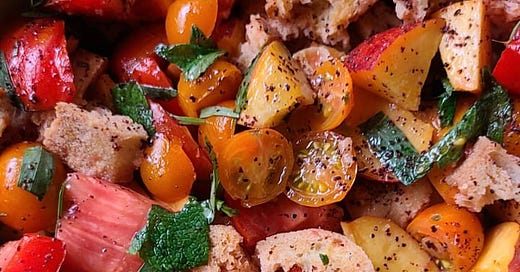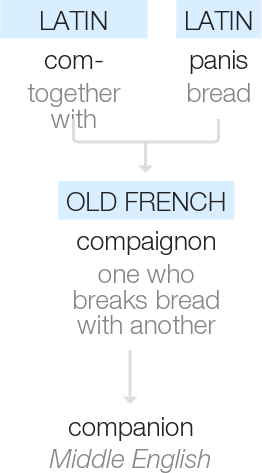Have you been skipping the bread basket?
Low-carb, no carb, paleo, keto, and worst of all, gluten intolerance - it’s been a rough ride for the humble loaf in the past 20 years.
Even restaurants have gotten in on the act. Unless you’re somewhere in Italy, where bread service, called pano e coperto, is the norm, fancified bread became a menu item to order, not a given. And lest you think that it is purely a money grab, this article breaks down the cost of producing a special loaf, and why one Chicago restaurant is taking its most popular item off the menu.
Enter the pandemic. With time on our hands and hearkening for creature comforts, we took up bread baking with a vengeance. The rapid rise and interest in all things bread piqued our curiosity in specialty flours, ancient grains, old milling techniques and of course, sourdough bread.
As we normalize and get on with things, there will likely be pandemic activities we’ll leave behind. Fewer jigsaw puzzles. Less bingeing on Netflix. Getting together in person instead of in front of a screen. And probably less baking. Months from now you may come across an odd container in the fridge that seems like a science experiment gone wrong. It’s probably your abandoned sourdough starter.
Before we let our newfound passion for baking - and for bread - cool along with our ovens, I’m here to make the case for keeping bread on the table.
Breaking bread together
For millennia, we humans have formed community around the table. At the heart of that companionship was bread. Breaking bread together has become a euphemism for gathering, and become enshrined in tradition still today.
Urgent! We are dinner guests tonight where someone is making us a fresh baked challah. Where can I buy some fancy butter?
Text from a friend received this weekend
If you’ve been invited to a Friday night dinner where the Jewish Sabbath - Shabbat - is celebrated, it’s customary to start the meal with a blessing of the bread and wine. Far from being a guilty pleasure, bread is celebrated and revered. And if you’ve eaten a piece of beautiful homemade challah, you appreciate both the symbolism and the deliciousness of the bread itself (and why good butter is de rigeur).

The greatest thing since sliced bread…
…may well be a whole loaf.
But is bread really “bad” for us? When we label a food as “bad”, or say it’s off-limits, in our perverse human way, we may want it more than ever.
Despite its long and revered history, today many people feel virtuous when they avoid the bread basket—or guilty when they eat a sandwich. Have we failed bread … or has modern bread failed us?
Carrie Dennett, MPH, RDN, CD, in Today's Dietitian
As Dennet describes in the above article, the answer is nuanced. And there are certainly health considerations for many of us that may lead to an avoidance of bread. But instead of making bread a forbidden fruit, if we think about it as part of the abundance available to us, it becomes something to enjoy and savour.
So do get the bread basket, or soak up the mussel juice with some sourdough or make a toasted bacon and tomato sandwich. Best of all, break bread with friends. You don’t need to turn on the oven and make your own to enjoy the pure comfort and pleasure of one of our oldest traditions. Please pass the butter and be the bread that soaks life in.
Peach panzanella summer salad
adapted from Shaya, Alon Shaya
serves 2 as a light lunch, 4 as a side
When it comes to food, the Italians are a thrifty bunch. Every part of the pig is put to use, vegetable scraps make stock, leftover risotto becomes arancini. Most of all, bread is never wasted.
Beyond bread crumbs, the precious loaf is used in many ways. From canederli (gnocchi-like balls made of a dough of stale bread, eggs, flour, milk, herbs and spices), pappa a pomodoro (tomato soup made with stale bread), to mondeghili (Milanese meatballs featuring leftover boiled beef and stale bread, amongst other ingredients), Italians never let a crumb go by the wayside.
My favourite way with leftover bread is panzanella salad. Summer’s abundance is the perfect juicy foil to the chunks of stale bread tossed with a simple vinaigrette. While the classic version uses primarily tomatoes, stale bread, red onions and basil, this version from Alon Shaya has the addition of ripe juicy peaches, plus tarragon, mint and sumac that takes this dish to the next level. I’m not a fan of red onions in salad but by all means add them in if you so desire.
Ingredients
2 thick day-old slices ciabatta or crusty country loaf, torn into bite-size pieces
2 large ripe heirloom tomatoes, plus a pint of ripe cherry tomatoes (a mix of colours is nice)
1 tablespoon sherry vinegar
1 teaspoon kosher salt
¼ cup extra virgin olive oil
2 large peaches
¼ cup fresh tarragon leaves
¼ cup fresh mint leaves
½ small red onion, thinly sliced (optional)
1 teaspoon ground sumac
If you have time, tear the bread into pieces a couple of hours before assembling the salad and leave on a cutting board to dry out further.
Halve one of the tomatoes lengthwise and grate on the coarsest side of a box grater over a bowl. Discard the skin.
Add the vinegar and salt to the bowl. Gradually whisk in the olive oil.
Core and cut the remaining tomato into wedges, and then halve the wedges; cut the cherry tomatoes in half. Halve the peaches, cut into wedges and halve the wedges. Add to the bowl, along the with torn bread pieces. If you are using the red onion, add it now.
Chop the herbs and add them to the bowl.
Gently toss the salad by hand and transfer to a pretty serving dish. Sprinkle with sumac and serve.







Challah is my kryptonite!! I have been making challah toasties all winter, and looking forward to making this salad once summer arrives in Aus!
Absolutely a summer fav!